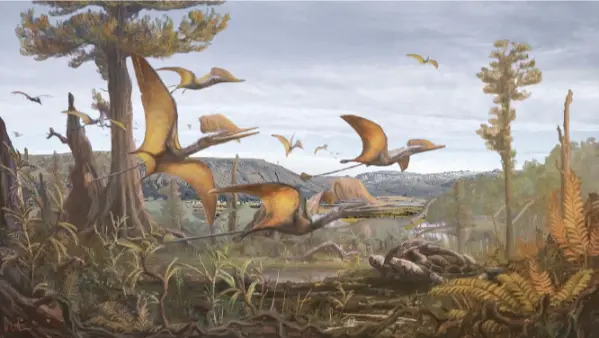A new species of ‘pterosaur’, the world’s oldest flying reptile, has been discovered in Scotland’s Isle of Skye. The name of this winged reptile is ‘Ceoptera evansae’. This animal is known to have roamed the earth during the Middle Jurassic period, 166-168 million years ago, i.e. the time of the dinosaurs.
Sky News reported this news in a report on Tuesday (February 6). Regarding the new species, Professor Paul Barrett, researcher at the Natural History Museum, said, ‘The discovery of this new species of pterosaur is completely surprising. Most of its species are from China.
According to the report, paleontologists found the fossil remains in a field in Elgol on the southwest coast of the island in 2006. Since then, the team has spent years sampling the remaining fossils and scanning the bones. The remaining fossil was an incomplete skeleton. Only parts of its shoulders, wings, legs and spine have been found.
But the researchers say it provides key insights into the evolutionary history and diversity of pterosaurs.
Researchers said the new species of pterosaur belongs to a group called ‘Darwinoptera’. Many fossils of this group have also been found in China.
The results, published in the Journal of Vertebrate Paleontology, show that Darwinoptera may be more diverse than researchers thought. It has survived for more than two and a half million years.
Read also: Scotland: Some interesting unknown facts
Some facts about Pterosaurs:
Pterosaurs, often referred to as “flying reptiles”, are a diverse group of ancient reptiles that lived alongside dinosaurs during the Mesozoic Era. They originated about 228 million years ago and became extinct about 66 million years ago. This ancient creature varied greatly in size, from the small Nemicolopterus to the gigantic Quetzalcoatlus, with a wingspan of up to 36 feet (11 m). Their wings were formed by a membrane of skin supported by an elongated fourth finger.
These incredible animals adapted to a variety of environments from coastal to inland areas and were efficient flyers, capable of powered flight. Pterosaurs had highly specialized skulls with long jaws filled with sharp teeth, which they likely used to catch fish, insects, and other small prey. Some species even had crests on their heads, perhaps used for display or species recognition.
Despite their reptilian appearance, pterosaurs were not dinosaurs; They belonged to a separate group called Pterosauria. Their fossil record provides valuable insight into the evolution of flight and the diversity of life during the Mesozoic Era. Pterosaurs are one of the most fascinating and mysterious groups of prehistoric animals, capturing the imagination of scientists and enthusiasts alike.



